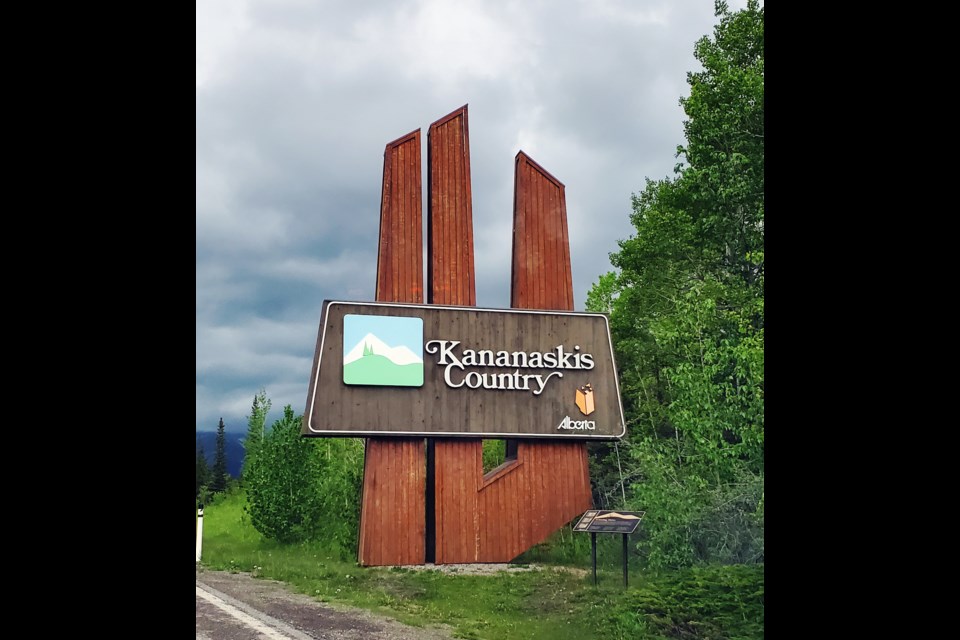KANANASKIS COUNTRY – Kananaskis Improvement District (KID) council is leaving the onus on the province to make improvements to visitor safety via emergency use satellite phones where cell service is lacking in Kananaskis Country.
In a Nov. 22 council meeting, councillors agreed the proposed project should not fall on KID to fund, and instead they will continue advocating for the installation of satellite phones with Alberta Parks.
“I concur with the importance of all the good things about having satellite phones and the ability in terms of having those available in emergencies,” said Coun. Erum Afsar. “I think it comes down to a jurisdictional responsibility for me and who’s going to pay for this.”
Administration posed two options following a request from the telecommunications committee supported by council to explore funding satellite emergency phone service within KID.
The first option, to fund the installation and operations of two satellite phones, which would be located at Driftwood and Burstall Pass day use areas as part of phase one, would draw from Municipal Sustainability Initiative capital and operating funding, of which $120,717 was allocated to KID by the province in 2022.
This option would also explore the use of grant monies from the Canada Community-Building Fund (CCBF), of which $50,000 was approved for telecommunications in 2022 for the design of appropriate technologies and equipment.
In total, council approved $500,000 in capital funding for telecommunications in 2023. The proposed allocations are currently divided between MSI (40 per cent), CCBF (30 per cent), and KID reserves (30 per cent).
While some of the monies that were originally allocated to telecommunications could potentially be re-directed to satellite phones, this would reduce the amount available for telecommunications projects next year, and council and committee are already exploring costly improvements to internet and cell service in KID. A 2021 telecoms feasibility study revealed costs for that project would range from $1.3-3.5 million based on basic or deluxe packages, and the cost is likely to have increased since.
Efforts in that project would likely need to seek the support of provincial or federal partners, as would the installation of emergency satellite phones, which Parks Canada has funded in other Alberta parks in the past.
In 2021, Parks Canada and the B.C. government partnered on an $80,000 project to install four satellite phones in Kootenay National Park, spaced about a 15-20 minute drive apart on Highway 93 South where there is no cell reception for 105 kilometres between Castle Junction and Radium Hot Springs.
The B.C. government contributed about $40,000 toward the purchase and installation of the emergency phones, but Parks Canada was responsible for covering the remaining purchase and installation costs, as well as operational costs and maintenance of the emergency telephones. These costs also did not include post-installation modifications, signage related to promoting awareness of the satellite phones, an infrastructure project manager, or solar design for battery charging, among other things.
Much of KID council’s debate centred around the challenges of providing a service that will be primarily used by visitors over residents, and the costs to maintain it.
Administration does not have the staff resources to check on and maintain the phones which would require attention as they would be solar-powered. In the winter, electricians must change the Kootenay National Park solar batteries every two days to keep them up and running.
There was also some concern from councillors around setting a precedent that KID, a municipality, would be paying for emergency infrastructure, although the equipment would largely be serving visitors.
“If I was to synthesize the discussion that I’ve heard tonight it was around challenges about service delivery, reliability and responsibility,” said Coun. Darren Enns. “I know that for all of us budget might be a key issue, but I actually didn’t hear a lot about budget being a main barrier for a lot of people.
“I heard about service reliability and other issues which are tangential to budget. So as much as we think about grants – and grants are fantastic – we also want to make sure that we deliver services that are reliable and public when it comes to emergencies.”
The installation of satellite phones would increase public access to emergency communication systems and could reduce emergency response time.
Kananaskis Country Public Safety has so far responded to 15 fatalities in the region this year, up from an average of about 10 per year. Considerations in installing the satellite phones include the fact that some individuals do not have access to personal satellite phones and there could have been some delay in contacting emergency services in those and other instances.
The locations for the satellite phones were determined by advice and analysis provided by the Kananaskis Emergency Communications Centre supervisor. Phase two of the project proposed emergency satellite phone installations at North Interlakes and Ptarmigan Cirque day use areas, and was not discussed by council at the meeting.
The Local Journalism Initiative is funded by the Government of Canada. The position covers Îyârhe (Stoney) Nakoda First Nation and Kananaskis Country.




